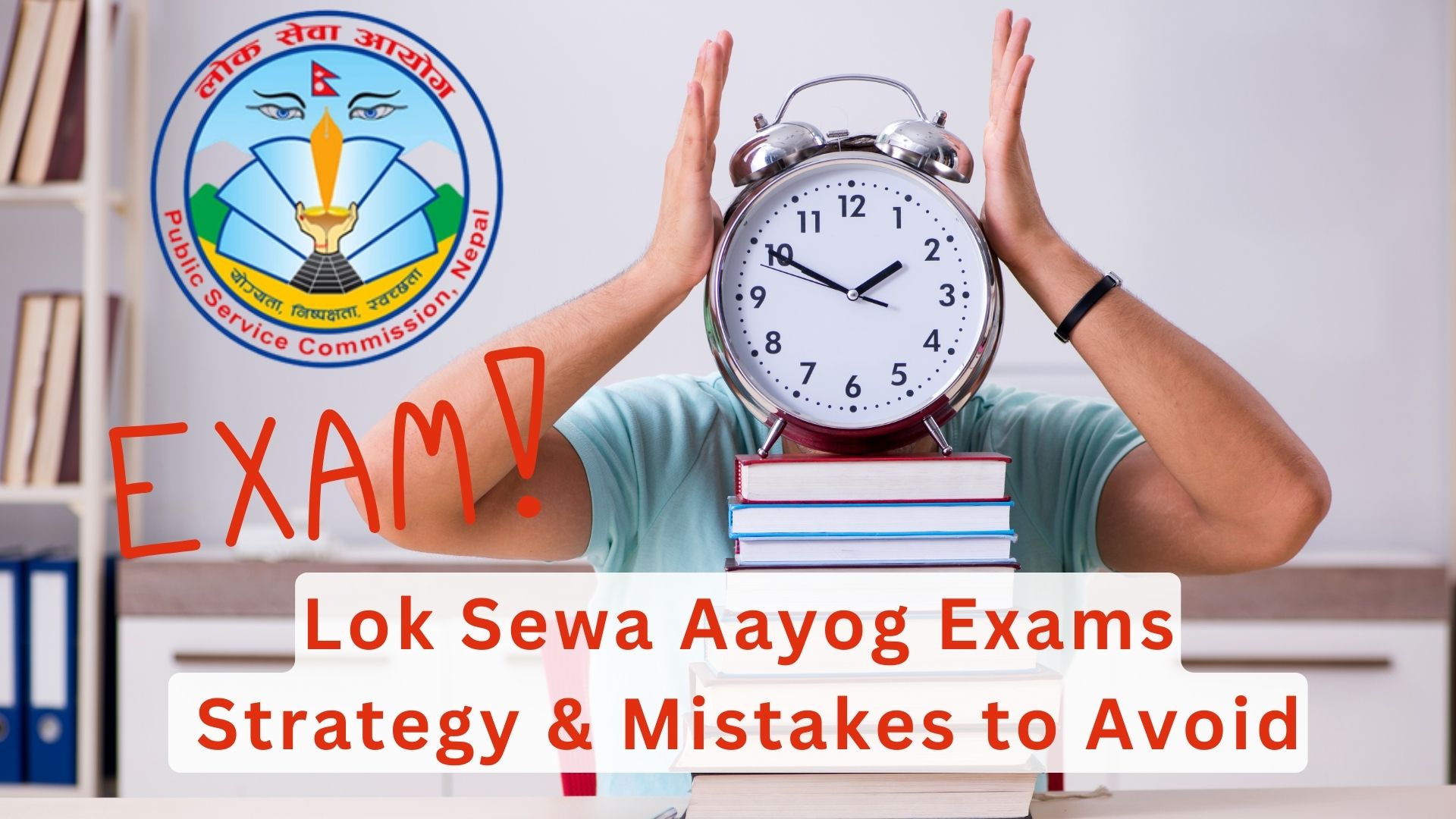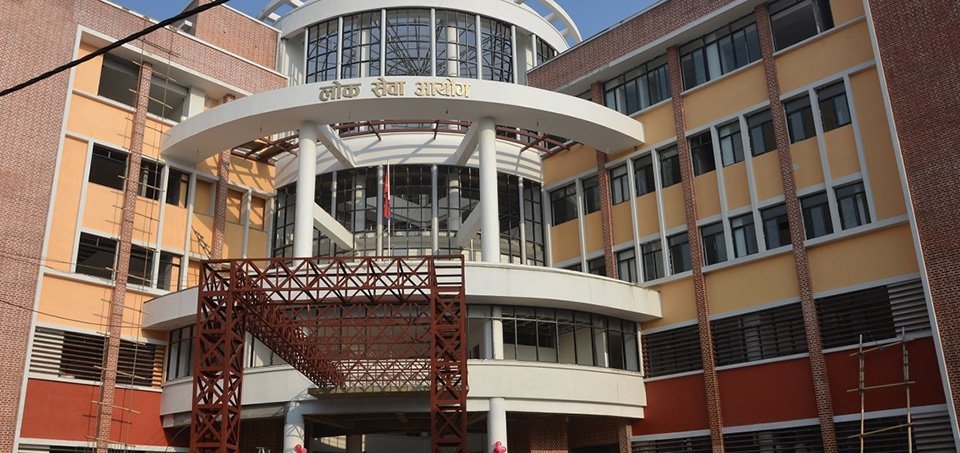
Lok Sewa Aayog Exams: Strategy and Mistakes to Avoid
Lok Sewa Aayog (Public Service Commission, Nepal) conducts competitive exams for federal, provincial, and local posts. The official portal lists syllabi, notices, exam centers, and results. Candidates should begin with the psc nepal syllabus for their target post, then plan by paper and stage.
Table of Content
- Lok Sewa Aayog Exams: Strategy and Mistakes to Avoid
- Who This Strategy Helps
- A Phased Loksewa Preparation Plan (12–20 Weeks)
- Paper-Wise Tactics That Match PSC Patterns
- Study Methods That Turn Study Time into Marks
- Answer-Writing Strategy That Examiners Can Mark Fast
- Common Mistakes and Quick Fixes
- Exam-Day Routine and Hall Rules
- Building a Loksewa Preparation Plan You Can Keep
- Conclusion
- FAQs
Stages and Papers
Most posts follow a sequence: preliminary (if specified), written papers (subjective and/or objective), and a final stage that includes skill tasks and an interview. Reputable Nepal education portals present the same flow and give paper-wise breakdowns that match official notices.

Marks, Pass Marks, and Weightage
-
Kharidar (Non-Technical): main written papers commonly total 200 marks across two subjective papers (pass 40 per paper). Final stage: Computer Skill Test (10) and Interview (30). Written scores dominate overall selection.
-
Nayab Subba (Non-Technical): Prelim 100 (pass 45); Main 200 with two subjective papers (pass 40 each); Final 40 (computer 10, interview 30). Merit depends on Main + Final.
-
Section Officer (Sakha Adhikrit): AAT prelim 100 (pass 45) split across general awareness, aptitude, and English; Main includes multiple 100-mark subjective papers (commonly 3 hours, pass 40). Final stage adds group/skill tests and interview. Written totals carry more weight than the final stage.
Center Rules and Materials
Official exam-center notices specify clear rules: black ink only, no mobile phones, calculators, or smartwatches in the hall, mandatory admit card with photo ID, and exams proceed on the announced date unless the Commission publishes a change. Arrive one hour early. These instructions appear in PSC PDFs issued for centers across Nepal.
Who This Strategy Helps
-
First-time candidates who want a clean loksewa preparation plan.
-
Working candidates with limited daily time.
-
Re-takers who want better recall, stronger writing, and steady scores.
-
Aspirants for federal, provincial, or local posts who need a psc nepal syllabus-first approach.
A Phased Loksewa Preparation Plan (12–20 Weeks)
The plan below fits most PSC posts. Extend or compress weeks based on your start date.
Phase 1: Map the Syllabus and Set Outcomes (Weeks 1–2)
-
Download the psc nepal syllabus for the exact service and post. Build a topic ledger: syllabus line → sources → difficulty → last revision → question type. Add links to the official page for quick checks.
-
Collect 3–4 past sets for your post. Group questions by theme (constitution, governance, budgeting, civil service rules).
-
Lock a weekly time budget you can keep: for example, two 90-minute focus blocks on weekdays and three on weekends.
-
Create a policy sheet for fast examples: budget cycle, audit steps, service code, federal–provincial–local roles.
Phase 2: Core Learning with Spacing and Interleaving (Weeks 3–12)
-
Spaced practice: revisit topics at growing gaps (Day 1 → 3 → 7 → 14). A classic meta-analysis reviewed 317 experiments and found spaced practice gains across many tasks. Set revisit dates on your calendar or tracker.
-
Interleaving: mix related topics within a session (e.g., governance + finance + HR). Studies show stronger learning on delayed tests when problems are shuffled rather than blocked. One classroom-linked report cites a large gain after a one-week delay.
-
Concept → Case → Answer: for each concept, attach a Nepal example, then write a 120–150-word timed answer. Keep one figure or table on each note page.
Phase 3: Retrieval, Mocks, and Feedback (Weeks 13–20)
-
Practice testing: swap a reading block for a timed mock and free recall each week. A meta-analysis shows practice tests outperform re-reading and other methods across many conditions. Build recall into every paper.
-
Keep an error log with four columns: concept, exact error, why it happened, and the fix (rule/example).
-
Add a speed session once a week: short answers and MCQs to exam time. Repeat the structure you will use on the day.
Phase 4: Exam Readiness and Calm Performance (Final 6 Weeks)
-
Run full simulations at the actual exam time. Follow hall rules: black ink, margin format, and quiet setup.
-
If anxiety peaks, try brief mindfulness before mocks. A 2024 meta-analysis across 18 studies reported reduced test anxiety after mindfulness-based sessions. Keep it short and repeatable.
-
Expressive writing for 10 minutes before a high-stakes test has raised scores in school settings and reduced the link between anxiety and poor performance. Practice this routine during mocks.
-
Guard sleep during the run-up; research reviews link sleep with encoding and consolidation of memory. Plan steady 7–8 hours through the final month.
Paper-Wise Tactics That Match PSC Patterns
Kharidar (Non-Technical)
-
Structure: two main subjective papers (100+100; pass 40), then Computer Skill Test (10) and Interview (30). Written totals guide merit.
-
Plan:
-
Weekly rhythm: 2 content days → 2 practice days → 1 recap day.
-
Micro-notes on office procedure, file movement, public records, and code of conduct.
-
For long answers, use a steady frame: Issue → Rule → Nepal example → Close.
-
Nayab Subba (Non-Technical)
-
Structure: Prelim 100 (pass 45); Main 200 with pass 40 per paper; Final 40 split across computer and interview.
-
Plan:
-
Alternate theory (administration, constitution, governance) with application (current policies, fiscal federalism).
-
Build a one-page current affairs sheet each week and file it under the syllabus line it supports.
-
Section Officer (Sakha Adhikrit)
-
Structure: AAT 100 (pass 45) over GA, aptitude, and English; Main includes several 100-mark subjective papers (pass 40, 3 hours). Final stage adds group/skill tests and interview.
-
Plan:
-
Two tracks: precision (definitions, clauses, processes) and analysis (trade-offs, reform paths, Nepal examples).
-
Keep a split-page note: left side rule, right side example/data point.
-
For AAT, build mixed sets across GA, aptitude, and English to practice switching modes quickly.
-
Study Methods That Turn Study Time into Marks
Spaced Practice
Returning to material across growing gaps yields stronger retention than massed study. The Cepeda review covered 839 assessments and 317 experiments, a strong base for daily schedules that spread topics through the week. Set revisit dates on your tracker.
Interleaving
Mixing problem types within a session improves selection of the right method during the exam. Research reports large gains on delayed tests when learners shuffle topics rather than block them.
Retrieval Practice (Testing Effect)
Practice tests, free recall, and timed answers strengthen memory more than extra reading. A 2017 meta-analysis found practice tests superior to restudy across many formats. Convert reading time into recall time every week.
Mindfulness and Expressive Writing
Short mindfulness sessions before tests reduce test anxiety in pooled analyses, and expressive writing right before an exam has improved classroom scores for students who worry under pressure. Try both during mock weeks; keep whichever feels helpful.
Sleep and Memory
Sleep supports encoding and consolidation. Reviews in psychology and neuroscience link stable sleep with better recall and more reliable performance. Keep a fixed bedtime and avoid late cram marathons near exam day.
Answer-Writing Strategy That Examiners Can Mark Fast
Short Answers (5 marks)
-
Definition (1–2 lines)
-
Rule or principle (2–3 lines)
-
Nepal example or case (2–3 lines)
-
Close (1 line) with a clear point
Long Answers (10 marks)
-
Issue: name the question’s focus in one line.
-
Principles: 2–3 points linked to the psc nepal syllabus.
-
Nepal context: one concrete example, a data point, or a short process flow.
-
Balance: show trade-offs; stay neutral.
-
Close: one practical step or summary sentence.
MCQ Tactics
-
Strike out out-of-scope options first.
-
Watch for absolute phrasing that rarely matches public policy language.
-
If stuck, mark and move to protect pacing; return in the last five minutes.
Common Mistakes and Quick Fixes
-
Only reading, no recall → Replace one reading block each week with timed recall and a small mock. Meta-analytic evidence favors practice testing for long-term learning.
-
Ignoring the exact syllabus → Attach every note to a syllabus line and keep links to the PSC page for that post.
-
No time trials → Run a speed session weekly for short answers and MCQs.
-
Relying on the interview to rescue the score → Written totals dominate overall marks for common cadres; the final stage adds relatively fewer marks.
-
Late-night cramming → Protect sleep in the final month; memory benefits from stable nights.
Exam-Day Routine and Hall Rules
-
Admit card + photo ID required for entry; reach the center one hour early.
-
Black ink only; pencils or gel exceptions are not accepted unless the notice for your exam says otherwise.
-
No mobile phones, smartwatches, calculators, bags, or loose papers in the hall. Follow the invigilator’s seating plan and timing.
-
Exams continue on the announced date even when a sudden holiday appears, unless PSC posts a change.
Building a Loksewa Preparation Plan You Can Keep
-
Create a weekly ledger that pairs topics with revisit dates (spacing), then mix topics inside sessions (interleaving).
-
Use past papers to craft short prompts and run 90-minute drills.
-
Keep a mistake notebook that shows concept, exact error, and a tested fix.
-
Add a current-affairs page each week and tag it to the syllabus.
-
Use mindfulness or expressive writing in mock weeks if nerves cut into recall.
Conclusion
A steady lok sewa aayog exam strategy starts from the psc nepal syllabus, adds spacing and interleaving to daily study, shifts toward retrieval practice in the middle weeks, and protects sleep near exam day.
Keep writing crisp, pack answers with Nepal-specific examples, and treat the interview as the final polishing step after strong written papers.
The rules are public; the methods are tested; a simple routine—kept week after week—moves scores.
FAQs
1) How many hours should I study each day for Loksewa?
Plan two 90-minute blocks on weekdays and three on weekends, then adjust after the first two weeks. Spread topics with spacing and mix them with interleaving to lift retention.
2) Are interviews decisive in PSC selection?
They matter, yet written totals carry most weight in common cadres. Check your post’s marks; Kharidar and Nayab Subba show large written totals with a smaller final stage.
3) What quick change raises long-answer marks?
Use a repeatable frame: Issue → Rule → Nepal example → Close. Add weekly timed writing and review through an error log. Meta-analytic work supports practice testing for stronger learning.
4) Are phones, smartwatches, and calculators allowed?
No. The official exam-center notice bans electronic devices, requires black ink, and asks candidates to arrive one hour early with an admit card and photo ID.
5) How do I manage nerves before the paper?
Try a 10-minute mindfulness routine or expressive writing before mocks and, if helpful, on exam day. Both approaches have peer-reviewed support for reducing test anxiety or buffering performance.
Lok Sewa Aayog

